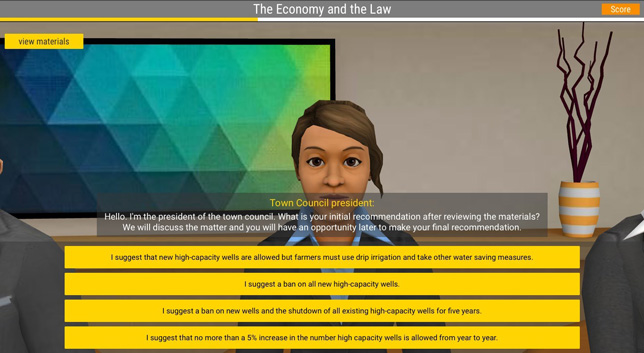McGraw-Hill Education Intros Game-Based Learning Activities

An economics simulation in McGraw-Hill Connect
McGraw-Hill Education has added more than 50 game-based learning activities to its digital course materials. The company worked with Muzzy Lane Software to develop simulations that "provide opportunities for students to apply their learning in experiential situations that mimic real-life work scenarios," according to a news announcement. Students access the content via the McGraw-Hill Connect digital learning platform.
The activities will be embedded in the learning materials for four courses this fall: Principles of Economics, Introduction to Business, Principles of Marketing and College Success. One example cited in the announcement: "In an Economics course, students take on the role of an advisor to the Federal Reserve chair as they try to navigate a financial crisis. Using real economic data visualizations, the student must indicate the appropriate course of policy action and then see how their decisions would impact the economy over several months if put into effect."
"Adding these simulations to our courses in Connect gives students a chance to practice crucial skills needed in their future careers and apply things they've learned in situations that resemble real life — all in a safe, low-stakes environment," noted Scott Virkler, chief product officer for higher education at McGraw-Hill Education, in a statement.
McGraw-Hill Education is continuing to work with Muzzy Lane to develop more simulations, with plans to "launch hundreds more across course areas in 2019."
For more information, visit the McGraw-Hill Education site.
About the Author
Rhea Kelly is editor in chief for Campus Technology, THE Journal, and Spaces4Learning. She can be reached at [email protected].